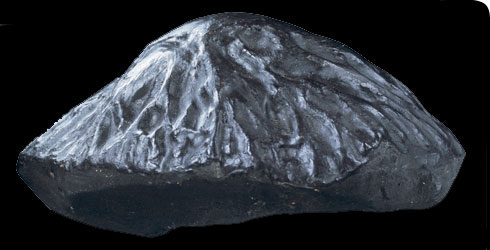What is a meteorite?
Meteorites are fragments of rock and/or metal that fall to Earth from space. Having broken away from a larger extraterrestrial body, meteorites can measure anything from a fraction of a millimetre to the size of a football pitch and bigger.
Captured by Earth's gravitational force, they are accelerated to speeds of over 11.2 kilometres per second. As they enter Earth's thick atmosphere they slow rapidly due to the friction and glow, flashing across the sky like a firework, before finally crashing to the ground.
Where do meteorites come from?
Most meteorites are fragments that have come away as 2 asteroids collide. Asteroids are irregular-shaped rocks that orbit the Sun. There are thousands of asteroids in our solar system, most in an orbit between Mars and Jupiter known as the asteroid belt. The asteroid belt was formed when the solar system was born about 4,568 million years ago, from a cloud of gas, dust and ice.
A small proportion of meteorites come from the Moon and the planet Mars. These meteorites are much younger than those from asteroids, some as young as 2,500-million-years-old and 180-million-years-old respectively. We know where they have come from because their composition is very similar to Moon rock brought back from the Apollo lunar mission and Martian soil from the Viking probe.
Where are meteorites found?
Although not many meteorites are seen hitting the ground and most fall into the sea, thousands are found each year. Meteorites can be found all over the world, but are easiest to spot in dry places, such as deserts, where they do not erode quickly and are less likely to be hidden by vegetation.
Scientists known as cosmochemists are able to work out what has happened throughout the life of a meteorite by studying its chemical structure, revealing a little piece of the solar system's history one rocky chunk at a time.
